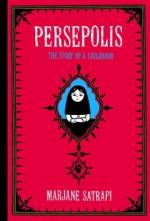
|
| Name: _________________________ | Period: ___________________ |
This test consists of 15 multiple choice questions and 5 short answer questions.
Multiple Choice Questions
1. Why does Satrapi love Anoosh right away?
(a) Because he has studied dialectic materialism
(b) Because he suffered under the previous regime
(c) Because he is well-traveled and well-cultured
(d) Because he helped to bring about regime change
2. How is Mohsen killed?
(a) He is shot
(b) He is drowned
(c) He is hung
(d) He is savagely beaten
3. When did Western influence in Iran end?
(a) 1979
(b) 1885
(c) 1885
(d) 1989
4. When was Fereydoon’s son conceived?
(a) The night before his execution
(b) The day he is arrested
(c) The morning of his escape
(d) The day that Fereydoon proclaimed independence
5. What does Satrapi say she gave up after talking about torture with her mother?
(a) Agnosticism
(b) Childish thinking
(c) Dialectical materialism
(d) Thoughts of revenge
6. What closed in Iran in 1980?
(a) Universities
(b) Iranian borders
(c) Bilingual schools
(d) Iran's museums
7. To whom does Marjane Satrapi compare her favorite writer, Ashraf Darvishian?
(a) Jane Austen
(b) Charles Dickens
(c) Walt Whitman
(d) Herman Melville
8. What did Mohammad Reza Pahlavi have to give up, in order to lead Iran?
(a) Control of the parliament to the opposition parties
(b) Iranian oil
(c) Borderlands
(d) Nothing
9. What cause did the people finally get to celebrate?
(a) Democratic reforms
(b) Victory in the war with Iraq
(c) Increased liberties
(d) The king's departure
10. What resource changed Iran’s economy?
(a) Minerals
(b) Dyes
(c) Spices
(d) Oil
11. How does Satrapi’s grandmother say she survived in her poverty?
(a) She took in sewing
(b) She left the country
(c) She remarried to a rich man
(d) She got a job in a factory
12. Where does Satrapi’s mother tell Marjane Anoosh has gone?
(a) To Russia
(b) To visit his mother in another city
(c) To America
(d) To prison
13. How does Satrapi make Anoosh’s story make sense?
(a) She focuses only on the things he was given to eat.
(b) She tells herself it is just like books she has read.
(c) She compares his trials to her friend’s father’s trials.-
(d) She forbids anyone to suffer like he did, when she is in charge.
14. Who created the first Iranian nation?
(a) The Aryans
(b) The Greeks
(c) The Medes
(d) The Persians
15. What is the swan made of, that Anoosh gives Marjane?
(a) A pebble
(b) Bread
(c) An old knife
(d) Paper
Short Answer Questions
1. What service did Satrapi perform for Mehri?
2. How do Satrapi’s friends react to her made-up stories about her parents?
3. What does Satrapi’s mother say about torturers?
4. What do Satrapi and her family condemn in their neighbors?
5. What statistic does Marjane offer to Anoosh’s political discussion?
|
This section contains 510 words (approx. 2 pages at 300 words per page) |

|




